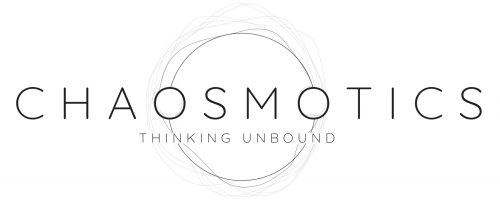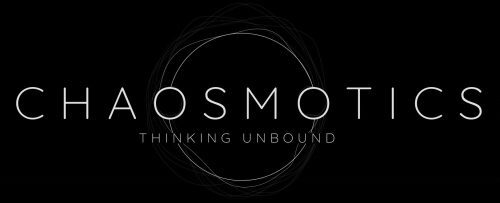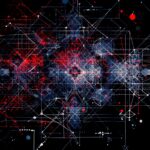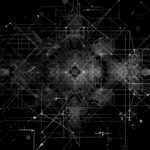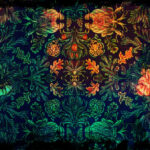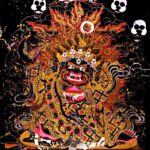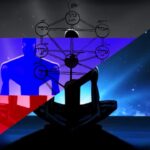An encounter takes place off the northern coast of Europe. It has as its subject the Grindadráp, the ancient and sacred Fær Øer Islands’ whaling, and it tells of the tension between modernity and tradition, between myth and efficiency, progress and identity. Chaosmotics continues to expand its analysis on mythopoiesis through this excerpt by Nicklas Quirós, part of Inland Magazine‘s first collective journey through the worlds and practices of some of the Earth’s most hidden and isolated countries.
_________________________________
According to Diogenes Laërtius, when Plato gave the tongue-in-cheek
definition of man as “featherless bipeds,”
Diogenes plucked a chicken and brought it into Plato’s Academy, saying,
“Behold! I’ve brought you a man,” and so the Academy added
“with broad flat nails” to the definition.
In the opaque depths of the North Atlantic Sea, creatures such as whales, seals, and dolphins have interacted with human cultures and imaginaries for millenia. Cetaceans have been depicted as ambiguous creatures that pertain to the divine, to the demonic, and to the might of kingdoms. § [M]yths and sacred perspectives on whales are encountered in Hawaii, where whales are creatures of the divine and the physical or of light and darkness. In the Maori cosmology, whales are also seen as sacred. Here, the whales are indicating to tribes where they should settle. Similarly, orcas play a central role in the origin myths of the American northwestern regions amongst the Tlingit and Haida communities. Here, these creatures have a dream-like presence, symbolising great power, terrifying for many animals, however, protectors of humans.
In the Viking saga of Örvar-odds, the ocean is depicted as being other-worldly, seas where Hafgua and Illhveli monsters lived. These were the most villainous and malicious of all sea-creatures known in the Sagas. They swallowed passing ships, men, and other whales posing as sker, rocks, and heather-covered islands that emerge from the murky waters. The encounter with sea monsters and animals such as cetaceans captivate these imagined yet embodied cultural networks. Their secret powers have always been far from human reach because of their sublime existence. Nevertheless, it is in these sublime experiences that we get to perceive the tension between the human world and the fetishization of cetaceans. §
A dramatic event unravels on the shores of Tórshavn. Pilot whales migrating through the North-Atlantic current preying on squid have been spotted passing close to the Faroese archipelago. The pilot whales swim with great speed, only to find themselves lost within an old Norse trap. The ritual hunt Grindadráp began once they crossed into the inner boundaries of the islands. Faroese fishermen have been plotting this hunt for months. Soon their rapid motorboats have taken advantage of the creatures’ nausea and have cornered them ever closer to the edges of the basaltic shores. The pilot-whales attempt to swim away in desperation.
They search for an escape route in vain; their effort is ruled by confusion. The pilot whale pod, encircled by motorboats, fear in agony for their lives. They are bringing them closer and closer to where the other Faroese await for the day’s catch. The Faroese hunters pierce each one of them with knives, harpoons, and hooks; slaughtering most of them almost instantly. The lucky get to live another day. Hundreds of people embrace with great attention the ongoing ritual hunt. An ecstatic experience reveals the raw scenery. In a few months, they will feed from this grind. Blood has been spilled today, and the shores are red to prove it. §
The ritual begins with the grindaboð, when the pilot whale pod has been discovered and is communicated to others afar in the archipelago. Previously, an intricate system would be in place, but now radios and cell-phones are far more efficient at communicating from an extreme location in the islands to the closest towns where they might be able to surround the pilot whale pod.
Everyone, excited for this ritual, runs, drives, and sails to where the pod might be slaughtered. The grindahvalur, the Faroese name of the pilot whales when they are alive, seek for ways to escape the harsh modern conditions of the hunt. The pilot whales, led by their pilot, are baffled by the vibrations created with the boats’ engines. It affects their echolocation. The whales are first cornered by the boats creating a semi-circle, intentionally stranding them in the right direction to the shore. Then in the great confusion, the pilot whales are either speared by specialised whale-spears or by hooks that penetrate their blowholes. Once ashore, in whatever manner, the Faroese use their highly specialised, hand-crafted knife, the grindaknúvur, cutting the pilot whale swiftly open through the spine.
The pilot whales are slaughtered by the hunters whose choice of weapon speaks for their personal hunt, only using a harpoon really as a last resource. This is clear in the fact that Faroese hunting strategies and techniques are oriented to make the killing of this sacred pilot whale as efficient and painless as possible, devising new instruments and following strict rules and regulations on how to do it. The shores display the dramatic dark red from the pilot whales’ blood. The sacred pilot whales are sacrificed and transformed to their new condition, characterised as ‘grind’, comparable to a pig becoming pork or a cow becoming beef. This liminal progression from objectification of the pilot whales from grindahvalur to grind unveils the sacredness of Grindadráp. The carcasses shockingly lay on the shore and each of them is immediately gutted and bled to avoid the grind from rotting carelessly.
The human symbolism begins with extreme precision. The hunters must pay a small tax for each pilot whale killed. Soon lawmakers take control of the aftermath, and the grindbyti starts by counting, measuring, and dividing. Actions that show the liminal transformation from life to death.
Immediately after the hunt, the Faroese elders divide the grind, giving a fair share to the weak and elderly first, and then to every person representing each village that takes part in the Grindadráp.
The grind is distributed equally amongst everyone by legislation in what Faroese call grindadistrikt. The last liminal stage of the grinahvalur, the living pilot whale, is present once the body is split and then eaten after months of preparation.
Later, the congregating configuration of the Grindadráp is reenacted with an ancient celebratory ritual of song and dance. The Faroese people ecstatically celebrate the grindadansur while singing and dancing, retelling the old story of the hunt. Another song is dansiringur, Ring of Dancers. Celebrated emphatically in circular dances; reproducing the circular hunt over and over again, showcasing the mythology that has kept this community unified for millenia.
Ballads of wars and heroic times linger throughout the whole celebration.
Grindadráp unifies the Faroese sense of wellbeing and culture. It has even been given a status within the Christian Church law, where whale meat was categorised as a cold food; for it came from the seas and like fish, it would be eaten on Fridays and holidays. Days of fasting would be accompanied with pilot whale meat. The Christian art of communion and love to the congregation is adjacent to Grindadráp. With this in mind, one can understand the growing numbers of adepts that are joining the Christian church. Nonetheless, what this examination of Grindadráp shows is that it mirrors the current Faroese world from within. The Faroese culture is totally marked by spiritual communion, a sense of wellbeing, and survival in extreme environmental conditions which are mediated by the Grindadráp. This means that if this unitary sense of community disintegrates by taking out their main meaning-making ritual, it follows that their culture would disintegrate from within.
This promethean ritual hunt has been part of Faroese culture for more than a thousand years and has been recorded successfully ever since 1584. However, today’s known Grindadráp is approaching its exodus.
Their promethean hunt has been polluted with the strange advent of mercury in the pilot whale meat and blubber. How far does mercury enter Faroe’s veins? Where can we start searching? §

Until the 1940s, the Faroe Islands had been mostly isolated and self-reliant. Globalism and technological innovations accelerated the transformation of their society which evoked an internal conflict in the culture. The industrial worldview changed the totality of Faroese culture as well as brought new problems to the core of their society. For although this new worldview brought forth the bright side of modern inventions such as goods, services, infrastructure, transportation, and medicine, it also came with the darker sides of those innovations. For example: massive waste, extreme pollution in all its forms, and more efficient weaponry that resulted in easier hunts and agriculture, which, despite being positive in the short run, ended up with depletion of species. Indeed, it is in this interplay between the enlightening new modern technological and innovative mindset and the dark sides of the brave new world that the Faroese live.
How can we understand the current changes that Faroese culture undergoes in contrast with modern crises regarding ethics, technology, gender, animal rights, infrastructure, sustainability, health, and finance that overwhelm most of the world’s societies today? More importantly, how can we understand the context of Faroese society regarding a sacred ritual hunt while it is under massive scrutiny from the scientific community, foreign media, and activists demanding for a screeching halt? §
Scientists and various foreign activists claim that the Faroese customs are outdated for the times and ask for what they consider to be more ethical practices that no longer involve killing long-finned pilot whales in the Faroese shores. For these hunting practices represent a failure to understand that these are conscious animals that experience pain much like us. Activists that perceive the gruesome scenery of Grindadráp accuse the Faroese to be savages or barbarians for the same reasons. However, these claims are problematic at core.
Any society that has undergone any type of imperialism or colonialism clearly is against anyone that presuppose a higher moral stance than the locals without understanding the ritual itself. Doctors from inside of Faroe and outside know that Grindadráp now has an expiry date, and they are also aware that the blubber and whale-meat contains an amount of mercury that is toxic to humans. High doses of mercury can cause detrimental health effects for our nervous system, damage our immune system, increase the chance for Parkinson’s disease, arteriosclerosis, diabetes mellitus type 2, and high blood pressure.
In consequence, it is clear that pilot whale meat is no longer fit for human consumption because of long term exposure to mercury. Activists and the medical community have extremely reasonable claims, however, the former have taken a stance that is motivated by foreign media demonising Faroese people often in brutal fashion. Such a perspective fails to consider a congruent anthropological analysis because it has not questioned or studied enough on the cultural basis and cultural networks of the Grindadráp; nor the crisis that pilot whale meat pollution implies to a culture that has depended on it for more than a thousand years. §
If we want to comprehend the Grindadráp ritual we need to dive into the perspective of the local folk. We must comprehend the traditionalist’s sense of “nature” and why they act in a certain way or believe certain things. Amongst such beliefs we find trolls, mermaids, and the Huldufólk myths.
The traditionalists in Faroe criticise the modern Faroese. For they have entirely accepted the technologies of the modern world by enhancing their motorboats, weaponry, and electricity, which not only changed the landscape of the Faroe, but also transformed and breached their beliefs.
The Huldufólk symbolise an entangled worldview between myth and reality and have a lesson to teach us. For they portray a warning to the modern world. Who are these mysterious Faroese beings and why is it important to mention them in the Grindadráp context?
The traditionalists tell the story that in the past, Faroese have been in unity or agreement with nature. Mermaids roamed the seas and the supernatural Huldufólk, who looked like some sort of grey-haired elves, lived behind the rocks and the mounds. They were in unity with nature and even manifested in people by either possessing or guiding them. They became the explanation of the Faroese for lost cattle and for guiding those that have gone astray to finding their way back home. The Huldufólk are nature personified and are often to blame for either ecological disturbance or good fate.
The mythological extinction of the Huldufólk begins with the advent of electricity and gives us a brief glance on the Grindadráp itself. The legends say that before electricity was brought to Faroe, the islands were covered in darkness. When the first technological innovations started, the Huldufólk, afraid of light, disappeared from the islands. Their spirits embody the ancient rocks and hillsides. Disturbing them implies at the same time that the Faroese ecosystem is fragile, reminding people to think twice before they act.
This parallel between the Huldufólk and the Faroese notion of nature and light shows a greater depth when we inspect the earlier energy sources.
Before electricity arrived to the Faroes, candles and energy sources came from the oil of pilot whales. An example can be seen in the Faroese oil lamps that constantly replenished their candles in holy places and their altars day and night. Oil that was used for both light and the purification of the holy Bible. Traditionally anointing the oil on the Bible to purify it.
Cetacean body parts served a great deal as a substitute for many materials that are in the modern worldview no longer necessary. The Huldufólk coincidently were afraid of light and disappeared once new technologies arrived to the Faroe. In this regard, the Huldufólk symbolise ecological decay, good luck or fate, and abandoned the Faroe when they started to industrialise. What previously served the Faroese to survive in the impending darkness of the north was facilitated by the whale oil itself that, historically, served to show them their way in the Islands.
Pilot whales supplied the Faroese people for a great proportion of their winter food, but also provided them with fuel. Everything out of the pilot whales was used for a reason. As floats for their nets, toys for their children, as string, and many other useful artefacts that showed the importance of the long-finned pilot whale and other cetaceans. The relevance of this early industrial good should not be underrated. Whale oil itself served to grease industrial machines during the early North Atlantic process towards modern technological “progress”. This oil was intensely sought after by all the world’s superpowers in the late 1800s.
In this perspective, both the Huldufólk and the Grindadráp are complex traditions that still have great importance in a culture that has undergone famines, the plague, and one of the most difficult ecosystems for agriculture on the planet. Whale meat has not abandoned them before as it can be eaten after long periods of salting and drying the meat. Every single bit is used and none goes to waste, something that is inconceivable in the modern day and age. The meat can be eaten in the seven months of almost absolute darkness. Whenever there is a bad season for agriculture, they can depend on that meat. The traditionalists care deeply about these customs and are well aware that their ecosystem and culture is changing. They perceive the current ecological decline as a clear example of the pollution in today’s Faroe Islands and abroad. In the traditionalist perspective, hunting whales or other creatures is not to blame for ecological catastrophes. Rather, it is the modern man whose buildings, harbours, tunnels, and motorboats helped to pollute the earth and make it uninhabitable. To traditionalists, it is evident that the present modern world is polluted; spiritually and literally. It is this avoidance for modernity’s pollution that they fight against. They stand in front of a crisis where both the exile of the Huldufólk and the bioaccumulation of mercury in the pilot whale meat and blubber are an ultimatum for today’s modern lifestyle. §
__________________________________________
Nicklas Quirós Van Outrive is a Mexican and Belgian philosopher and anthropologist interested in how societies and culture adapt to the Brave New World. His interests range from understanding where your food comes from, how belief systems arise, to the advent of new scientific innovations such as AI that might change the world as we know it. Currently, he lives in Mexico City and works as an art advisor.
***

